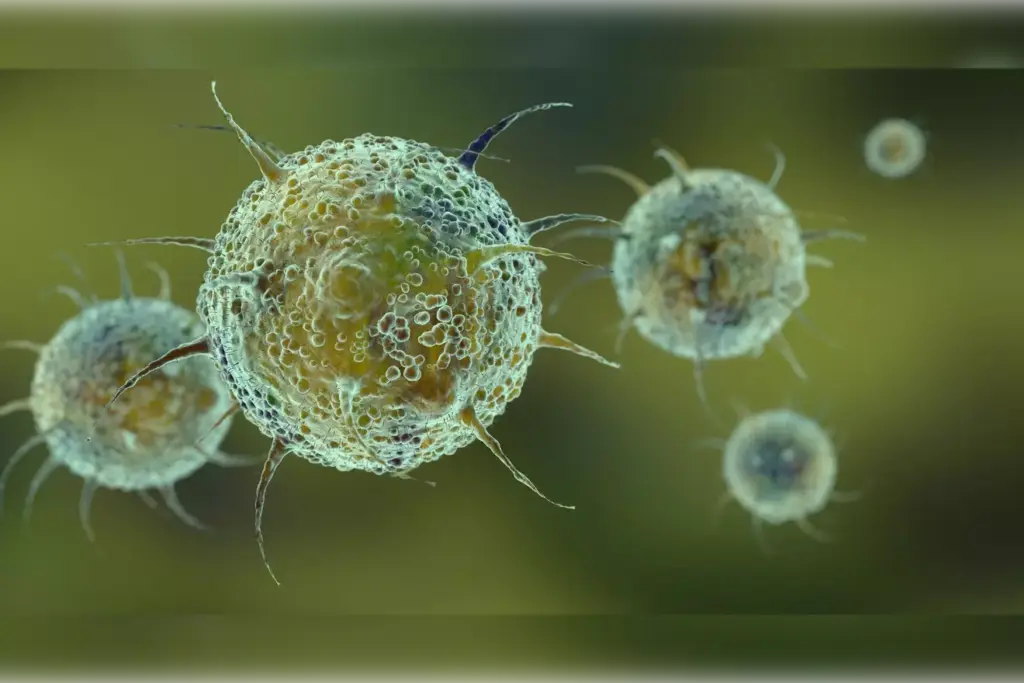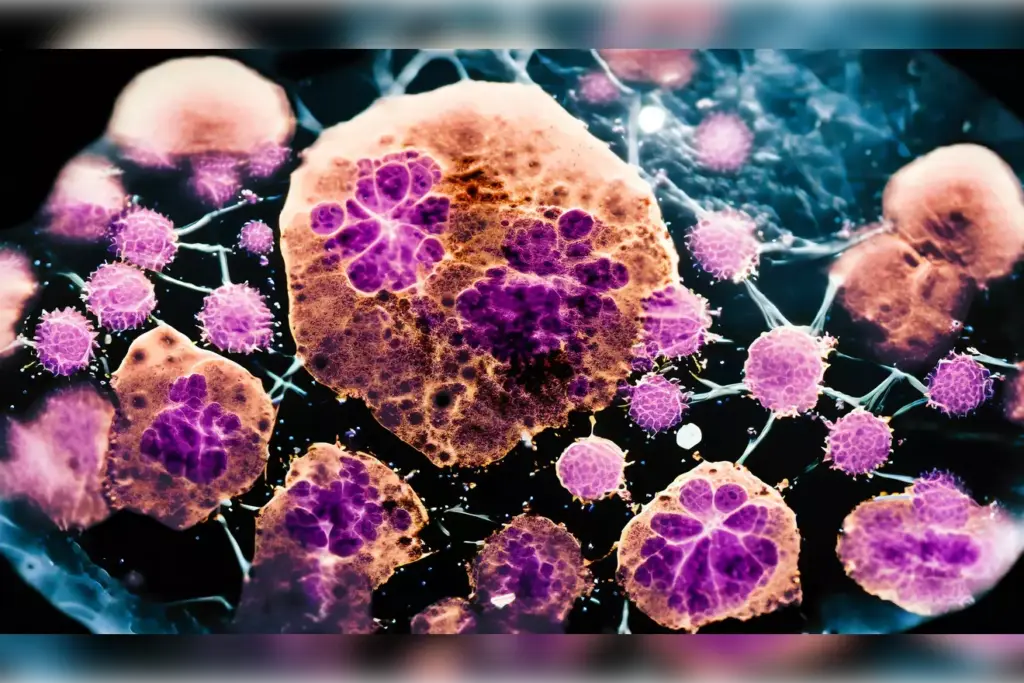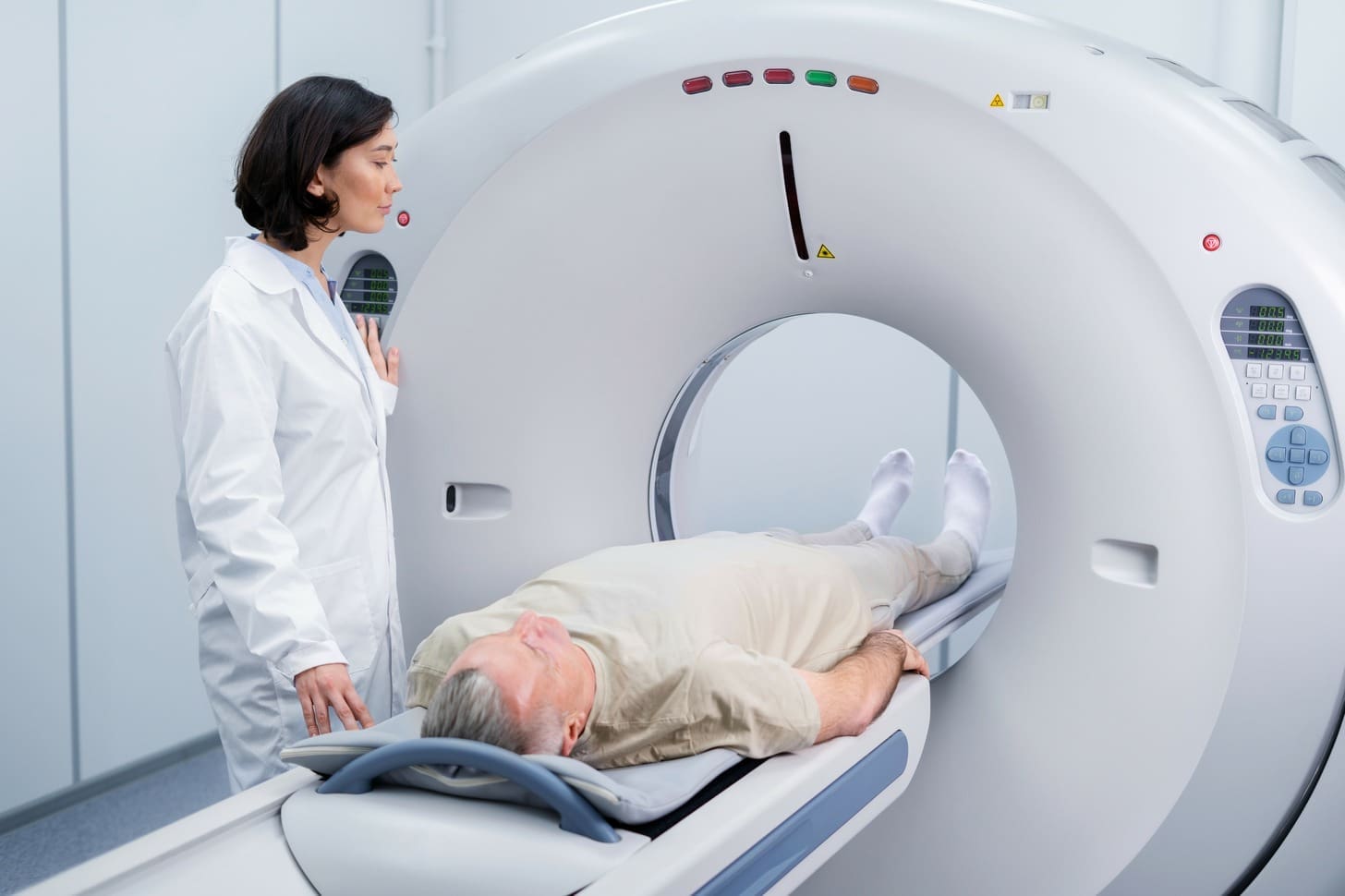Last Updated on November 27, 2025 by Bilal Hasdemir

At Liv Hospital, we lead in cancer treatment with CAR T-cell therapy. This immune cell therapy uses genetically modified T cells. They target and destroy cancer cells.
We use CAR-T technology to boost your immune system against cancer. This treatment is a major leap forward in cancer treatment. It brings new hope to patients everywhere.
Key Takeaways
- CAR T-cell therapy is a groundbreaking treatment that uses genetically modified T cells to combat cancer.
- This therapy empowers the immune system to target and destroy cancer cells more effectively.
- CAR-T technology represents a significant breakthrough in cancer treatment.
- Our hospital is at the forefront of providing this advanced immune cell therapy.
- We offer complete support for international patients seeking top-notch cancer treatments.
The Fundamentals of CAR T-Cell Therapy as an Immune-Based Treatment
CAR T-cell therapy is a new way to fight cancer. It uses the body’s immune system to attack cancer cells. This method is promising for treating some cancers, like blood cancers.
Defining CAR T-Cells and Chimeric Antigen Receptor Technology
CAR T-cells are T cells that have been genetically engineered. They can now find and attack cancer cells. This is done by adding a special receptor to the T cells.
The chimeric antigen receptor technology is key to CAR T-cell therapy. It makes a new receptor that helps T cells find cancer cells. This way, CAR T cells can target cancer cells more effectively.
How CAR T-Cell Therapy Differs from Conventional Cancer Treatments
CAR T-cell therapy is different from traditional cancer treatments. It’s more precise and targets cancer cells directly. This means it can cause fewer side effects and may work better.
| Treatment Characteristics | CAR T-Cell Therapy | Conventional Cancer Treatments |
|---|---|---|
| Targeting Mechanism | Specifically targets cancer cells through CAR | Often affects both cancerous and healthy cells |
| Side Effects | Can have significant but generally more manageable side effects, such as cytokine release syndrome | Can have broad and harmful side effects, such as hair loss, nausea, and increased risk of infections |
| Response Duration | Can lead to potentially more durable responses | Response duration varies and can be less durable |
Understanding CAR T-cell therapy is important. It’s part of a bigger group called immunotherapy. Immunotherapy uses the immune system to fight cancer. CAR T-cell therapy is a leading and personalized approach within this category.
The Evolution of CART Therapy in Modern Oncology
CAR T-cell therapy is changing oncology. It uses the body’s immune cells to fight cancer with great precision. This therapy has become a key part of modern cancer treatment.
Historical Development of Immune Cell Therapy
Immune cell therapy started in the early 20th century. Scientists then began to see how the immune system could fight cancer. Over time, CAR T-cell therapy became a leading technology.
Here are some important milestones in immune cell therapy:
- Early experiments with cancer immunotherapy
- Advancements in understanding T-cell biology
- Development of chimeric antigen receptor technology
- First clinical trials of CAR T-cell therapy
Breakthrough Discoveries Leading to Clinical Applications
Several discoveries have made CAR T-cell therapy possible. These include advances in genetic engineering and a better understanding of the immune system. Also, patient care and safety have improved.
The table below shows key developments and their impact on CAR T-cell therapy:
| Breakthrough | Description | Impact on CAR T-Cell Therapy |
|---|---|---|
| Genetic Engineering Advances | Improved methods for modifying T cells | Enhanced efficacy and safety of CAR T cells |
| Understanding T-Cell Biology | Insights into T-cell activation and persistence | Better design of CAR T cells for long-term cancer control |
| Immune System’s Role in Cancer | Recognition of the immune system’s ability to fight cancer | Development of targeted therapies like CAR T cells |
Research on CAR T-cell therapy is ongoing. New types of CAR-T cells are being developed. These improvements aim to make CAR T-cell therapy even more effective against cancer.
How CAR T-Cell Therapy Works: The Mechanism of Action
CAR T-Cell therapy changes a patient’s T cells to fight cancer better. It uses the body’s immune system to find and kill cancer cells. This makes treatment more effective.
The Engineering Process: From Patient Cells to Cancer-Fighting T Cells
The journey starts with taking T cells from the patient’s blood. These cells are then changed to have a special receptor. This receptor helps them find and attack cancer cells better.
The steps to engineer these cells are:
- Collecting T cells from the patient
- Adding the CAR gene to the cells
- Growing more of these modified cells
- Checking to make sure they work right
After preparation, the CAR T cells are given back to the patient. They then go after and kill cancer cells.
How Modified T Cells Target and Destroy Cancer Cells
With the CAR, these T cells can find and stick to cancer cells. This action makes the T cells attack and kill the cancer cells.
This therapy works well because the modified T cells stay in the body. They keep watching for and killing cancer cells.
| Cancer Type | Response Rate | Complete Remission Rate |
|---|---|---|
| Acute Lymphoblastic Leukemia (ALL) | 90% | 80% |
| Diffuse Large B-Cell Lymphoma (DLBCL) | 80% | 50% |
CAR T-Cell therapy is a big step forward in cancer treatment. It gives hope to patients who had few options before.
CAR T-Cells as “Living Drugs”: Persistent Cancer-Fighting Activity
CAR T-cell therapy is a new way to fight cancer. It works like “living drugs” that keep fighting cancer even after treatment ends. This makes CAR T-cell therapy different from other cancer treatments, giving hope to those with hard-to-treat cancers.
Long-Term Persistence in the Body
One big plus of CAR T-cell therapy is how long it lasts in the body. Research shows CAR T-cells can keep fighting cancer for months or years after treatment. This long-term persistence is key for keeping cancer at bay and stopping it from coming back.
How CAR T-cells last so long is because they can grow and shrink based on how much cancer they find. After growing and shrinking, some CAR T-cells become a long-lasting memory group. This memory group is vital for keeping cancer from coming back.
Memory Response and Ongoing Surveillance Against Cancer Recurrence
The memory response from CAR T-cells is key to long-term cancer protection. These memory cells can quickly find and fight cancer cells. This constant watch helps stop cancer from coming back and keeps the cancer away.
- CAR T-cells can establish a long-lived memory population, providing ongoing protection against cancer.
- The memory response enables a rapid and effective immune reaction against recurring cancer cells.
- Ongoing surveillance by CAR T-cells helps maintain cancer remission and prevent relapse.
By acting as “living drugs,” CAR T-cells have changed how we treat some cancers. They offer better results when other treatments don’t work. Their lasting presence and memory response make them a powerful tool against cancer.
FDA-Approved CAR T-Cell Therapies and Their Applications
CAR T-cell therapy has changed how we treat some cancers. Several FDA-approved options are now available. These therapies have shown great results in clinical trials.
Kymriah: First FDA-Approved CAR T Therapy
Kymriah, also known as tisagenlecleucel, was the first CAR T-cell therapy approved by the FDA. It treats certain B-cell precursor acute lymphoblastic leukemia (ALL) and diffuse large B-cell lymphoma (DLBCL). The approval of Kymriah marked a significant milestone in the field of immunotherapy.
Yescarta and Other Approved CAR T-Cell Therapies
Yescarta, or axicabtagene ciloleucel, is used to treat certain non-Hodgkin lymphoma (NHL), including DLBCL. Other CAR T-cell therapies are also approved, each for specific types of cancer. The diversity of approved therapies allows for more personalized treatment approaches.
The CAR T-Cell Therapy Approval Process and Regulatory Considerations
The FDA reviews CAR T-cell therapies thoroughly to ensure they are safe and effective. This includes several stages, from pre-IND to BLA submission. Regulatory considerations are key to ensure these complex therapies meet high quality and safety standards.
| Therapy Name | Indication | Manufacturer |
|---|---|---|
| Kymriah (Tisagenlecleucel) | B-cell precursor ALL, DLBCL | Novartis |
| Yescarta (Axicabtagene Ciloleucel) | DLBCL, NHL | Gilead |
| Breyanzi (Lisocabtagene Maraleucel) | DLBCL, NHL | Bristol Myers Squibb |
Types of Cancers Treated with CAR T-Cell Therapy
CAR T-cell therapy has changed how we treat blood cancers. It offers hope to those with few options before. It’s also being tested for other cancers.
Hematologic Malignancies: Leukemias and Lymphomas
CAR T-cell therapy works well for acute lymphoblastic leukemia (ALL) and diffuse large B-cell lymphoma (DLBCL). These blood and lymph system cancers see better treatment results with CAR T-cell therapy.
“CAR T-cell therapy has changed the game for B-cell cancer patients,” say experts. It can lead to complete remissions in those who’ve tried many treatments.
The FDA-approved CAR T-cell therapies, like Kymriah (tisagenlecleucel) and Yescarta (axicabtagene ciloleucel), are key to this progress. Kymriah helps young patients with ALL, while Yescarta treats certain DLBCL.
Research Progress in Solid Tumors and Other Cancer Types
While CAR T-cell therapy excels in blood cancers, it’s also being tested for solid tumors. Solid tumors, like lung, breast, and colon cancers, are harder to treat because of their complex nature.
Researchers are working on new CAR T-cell approaches for solid tumors. They aim to design CARs that can target multiple tumor antigens and improve how CAR T-cells work in tumors. They’re also exploring combining CAR T-cell therapy with other treatments.
Early trials show promise in treating solid tumors like glioblastoma and neuroblastoma. As research grows, CAR T-cell therapy might treat more cancers, giving patients more options.
- CAR T-cell therapy is being tested for solid tumors.
- New CAR T-cell designs aim to improve effectiveness.
- Combining CAR T-cell therapy with other treatments is being explored.
As the field evolves, CAR T-cell therapy will likely become more important in cancer treatment. It will help with both blood and solid tumors.
The Patient Journey Through CAR T-Cell Treatment
Starting CAR T-cell therapy is a big step in fighting cancer. It’s a journey from the first check-up to aftercare. We offer top-notch care and support to patients from around the world.
Pre-Treatment Evaluation and Preparation
The first step is a detailed check-up before treatment. This check is key to see if CAR T-cell therapy is right for each patient. We do blood tests, imaging, and more to check health and cancer spread.
We also teach patients and their families about the treatment. This helps them get ready mentally and emotionally.
The Treatment Process and Hospital Stay
The treatment has several important steps. First, we take T-cells from the blood. Then, these T-cells are changed to fight cancer in a lab.
After, patients get chemotherapy to get ready for the T-cells. This step is key for the treatment to work. The T-cells are then given back to the patient to attack cancer.
Patients stay in the hospital to be watched after getting the T-cells. Our team keeps a close eye for any problems or side effects.
Post-Treatment Monitoring and Follow-Up Care
After leaving the hospital, patients need close monitoring. We see them often to check how they’re doing and for side effects.
Keeping up with patients long-term is important for their health and catching cancer early. We work with local doctors to make sure care is smooth and ongoing.
We’re dedicated to supporting our patients through CAR T-cell treatment. By guiding them every step of the way, we aim to make the process as easy and effective as possible.
Challenges and Future Directions in CAR T-Cell Research
CAR T-cell therapy is a game-changer in cancer treatment. Yet, it faces challenges that need ongoing research. We must tackle these issues to unlock the full power of CAR T-cell therapy.
Current Limitations: Side Effects, Resistance, and Accessibility
CAR T-cell therapy can cause serious side effects like cytokine release syndrome (CRS) and neurotoxicity. These effects are severe and need careful management. Researchers aim to reduce these risks by improving patient selection and developing safer CAR T-cell products.
Another hurdle is resistance to CAR T-cell therapy. Tumors can evade CAR T-cells through various means. To beat this, scientists are working on targeting multiple antigens and creating CAR T-cells that last longer and multiply more.
Getting CAR T-cell therapy to more patients is also a big challenge. The complex making process and high costs limit access. Efforts are being made to make these therapies more affordable and widely available.
Innovations: Bispecific CAR-Ts, Switchable Constructs, and Off-the-Shelf Products
To overcome current challenges, researchers are creating new CAR T-cell products. Bispecific CAR-Ts, for example, target two antigens to fight off tumor escape. This could lead to better treatment outcomes.
Switchable CAR-T constructs offer a way to control CAR T-cell activity. By using separate molecules, doctors can manage toxicity and enhance safety. This innovation could be a game-changer.
Off-the-shelf CAR T-cell products aim to make personalized therapy more accessible. These products can be mass-produced and used right away. This could speed up treatment and make it more available to patients.
As CAR T-cell research advances, these innovations will be key in shaping cancer treatment’s future. By addressing current limitations and using new technologies, we can improve patient care and make these therapies more accessible.
Conclusion: The Transformative Impact of CAR T-Cell Therapy on Cancer Treatment
CAR T-cell therapy is changing cancer treatment by using the immune system to fight tough cancers. It has a big impact, giving hope to patients with blood cancers and possibly others too.
This therapy can find and kill cancer cells exactly, which could cure some cancers. As research grows, we’ll see better CAR T-cell therapy. This means fewer side effects and treating more types of cancer.
We’re working hard to make CAR T-cell therapy available to patients around the world. Our goal is to give top-notch care and help patients get better. We’re excited to see how this therapy will keep improving and help more people.
FAQ
What is CAR T-cell therapy?
CAR T-cell therapy is a new way to fight cancer. It uses special T cells to find and kill cancer cells. These T cells are made to work better against cancer.
How does CAR T-cell therapy work?
First, T cells are taken from the patient. Then, they are changed with CAR technology. After that, they are put back into the patient. These T cells then go after and destroy cancer cells.
What are the benefits of CAR T-cell therapy?
CAR T-cell therapy can lead to long-term cancer remission. It targets cancer cells directly. It also works on some blood cancers that other treatments can’t.
What types of cancers can be treated with CAR T-cell therapy?
It mainly treats blood cancers like leukemias and lymphomas. But, research is looking into using it for solid tumors too.
What are the FDA-approved CAR T-cell therapies?
The FDA has approved Kymriah and Yescarta for certain blood cancers. These therapies are made to fight cancer more effectively.
What is the patient journey through CAR T-cell treatment?
The journey starts with an evaluation. Then, the treatment process begins. The patient stays in the hospital. After, they get follow-up care to check on their health.
What are the possible side effects of CAR T-cell therapy?
Side effects include cytokine release syndrome and neurotoxicity. There’s also B-cell aplasia. But, doctors can manage these with the right care.
What is the future of CAR T-cell research?
Research aims to make CAR T-cell therapy better and safer. It also wants to use it for more cancers. New ideas include bispecific CAR-Ts and off-the-shelf products.
How does CAR T-cell therapy differ from traditional cancer treatments?
It’s different because it uses T cells to target cancer cells. Unlike chemotherapy or radiation, it’s more precise.
What is the significance of CAR T-cell therapy in cancer treatment?
It’s a big step forward in cancer treatment. It gives hope to patients with hard-to-treat cancers. It could be a cure for some.
References
- National Cancer Institute. CAR T Cells in Cancer Treatment. https://www.cancer.gov/about-cancer/treatment/research/car-t-cells
- Sterner RC, Sterner RM. CAR‑T cell therapy: current limitations and potential strategies. Blood Cancer Journal. 2021;11(4):69. doi:10.1038/s41408‑021‑00459‑7. https://www.nature.com/articles/s41408-021-00459-7 (Nature)
- Leukemia & Lymphoma Society / CINJ. CAR‑T Cell Therapy FACT Sheet. https://cinj.org/sites/cinj/files/documents/CAR-T-Cell-Therapy-FACT-Sheet-LLS-document.pdf
- Feins S, et al. An introduction to chimeric antigen receptor (CAR) T‑cell therapy. PubMed. PMID: 30680780. https://pubmed.ncbi.nlm.nih.gov/30680780/ (PubMed)
- Fischer JW, Bhattarai N. CAR‑T Cell Therapy: Mechanism, Management, and Mitigation of Inflammatory Toxicities. Frontiers in Immunology. 2021. https://www.frontiersin.org/journals/immunology/articles/10.3389/fimmu.2021.693016/full (Frontiers)








